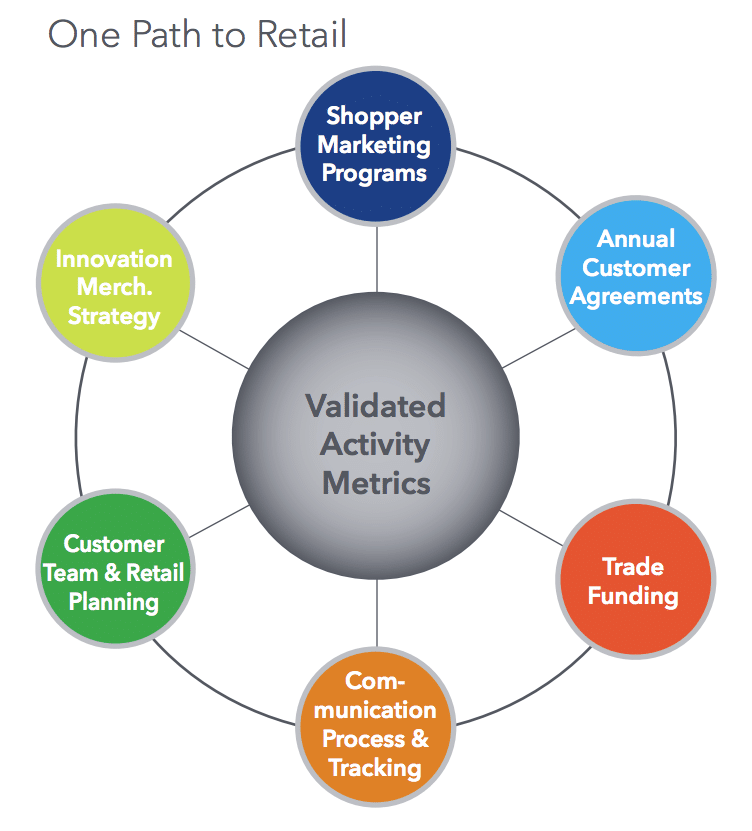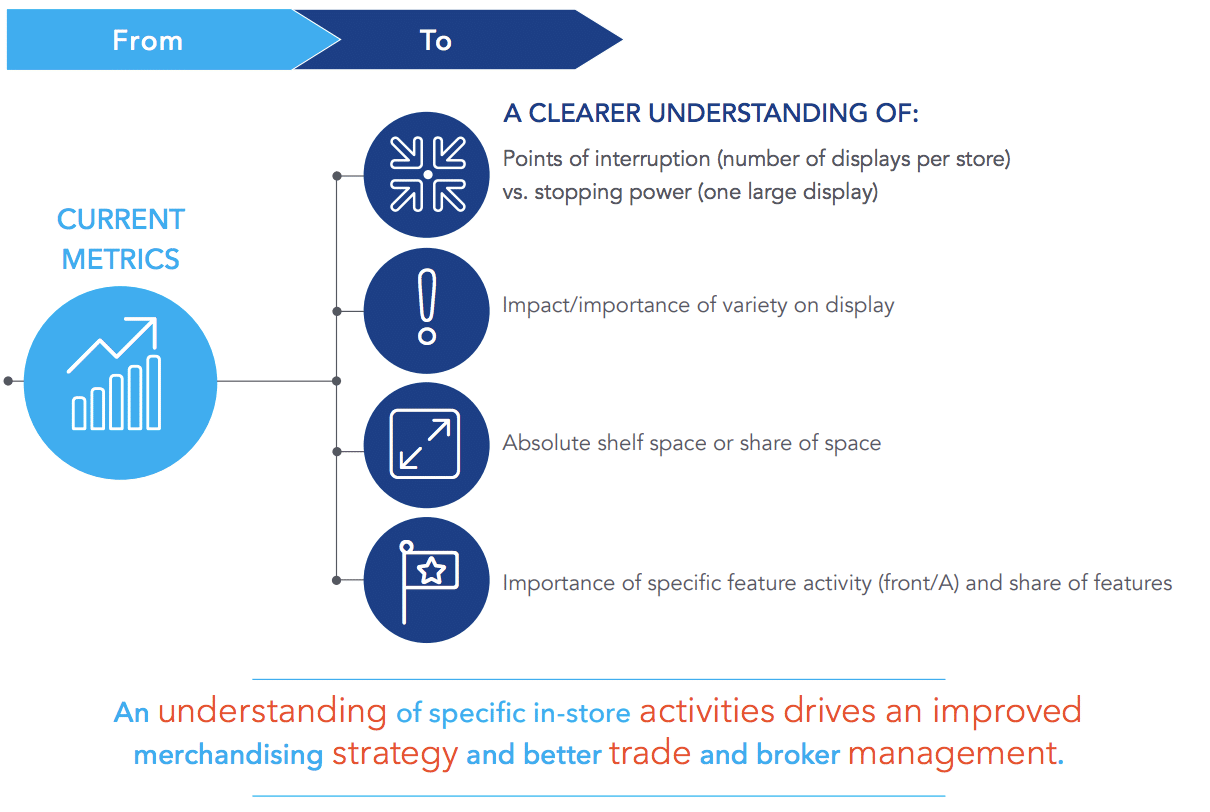Most CPG organizations today understand the importance of metrics as they evaluate which in-store activities drive volume and sales, and the underlying factors that impact performance.
However, new research shows it’s critical to harness the right metrics to create a more comprehensive merchandising strategy, developing a more accurate picture of how best to direct in-store resources against shelf, display and feature ads.
A new report from data analytics firm IRI Worldwide, Merchandising Strategy: Optimize In-Store Performance for Growth with Metrics That Matter, takes a closer look at identifying the most impactful metrics for measuring performance against sales goals.
“Manufacturers and traditional retailers remain under intense competitive pressure, and impactful in-store activities are critical for continued growth,” says Bill Ilaria, principal of IRI In-Store Solutions, in a news release. “Trade spend and related selling expenses account for 30-40 percent of a manufacturer’s profit and loss, but in-store ROI is in decline. As a result, marketers must understand which in-store activities will move their organizations forward.”
At the heart of IRI’s approach is establishing a validated ranking of how three in-store elements—display merchandising, shelf configuration and feature—can work in harmony to maximize lift. This ranking gives brand and retail partners the perspective necessary to prioritize activities and sharpen the direction of execution and in-store performance.
These metrics become the cornerstone of a collaborative organization, focusing marketers on change management to execute flawlessly across the most important metrics. More specifically, marketers gain an increased understanding of key in-store variables, including:
- Points of interruption (number of displays per store) versus stopping power (one large display).
- Impact/importance of variety on display.
- Absolute shelf space or share of space.
- Importance of specific feature activity (front/A) and share of features.
“The Metrics That Matter framework really changes the game,” concluded Ilaria. “Understanding why and how metrics matter across an organization really sets the groundwork for a cross-functional focus on defined activities, directing every arm of an organization to the same place—success and growth.”










